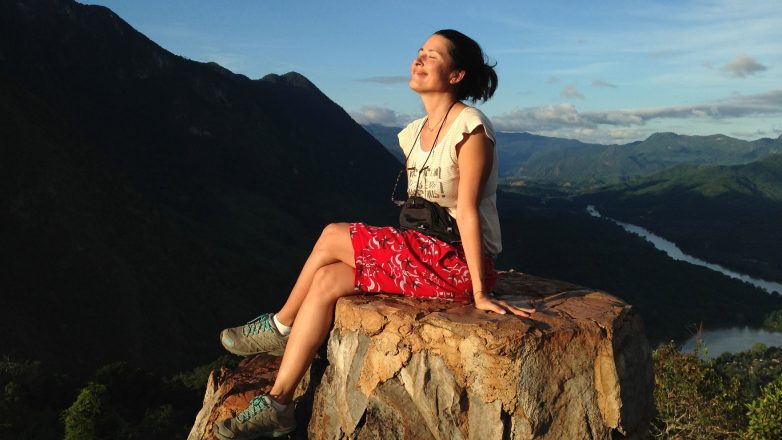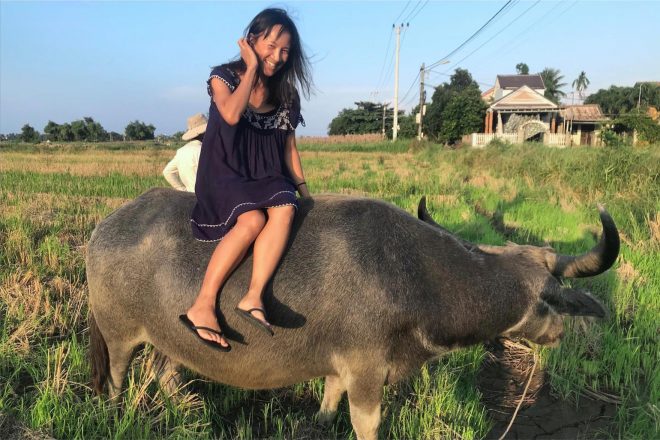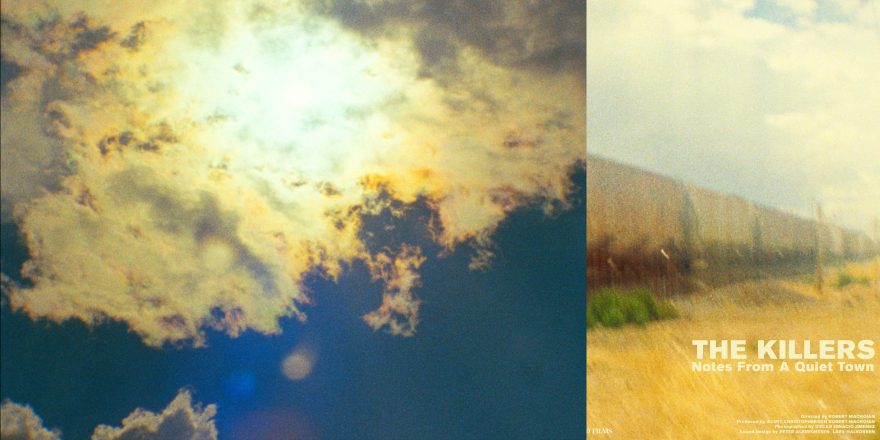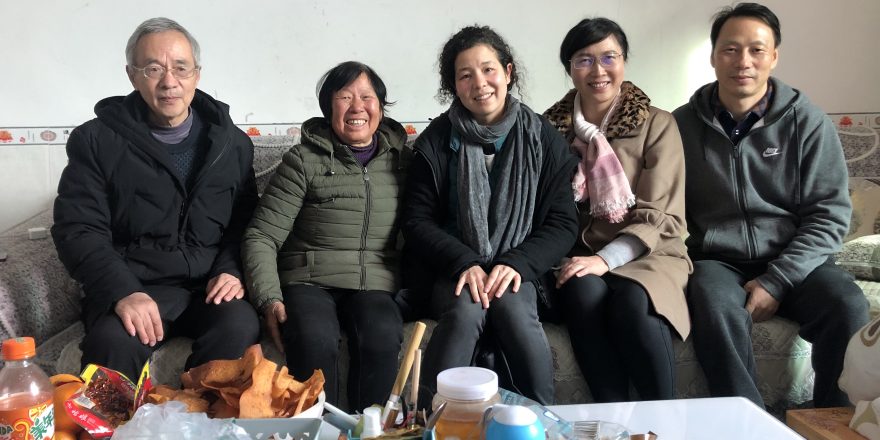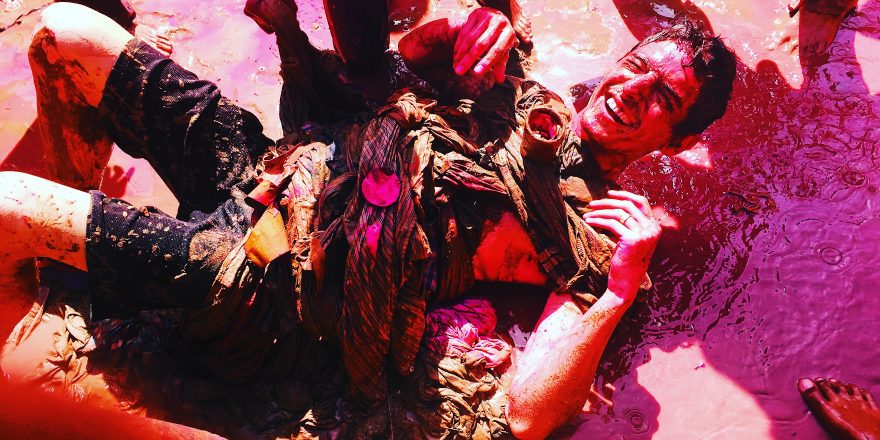In 1995, I was living in London, working as a coat-check girl at The Ivy, one of London’s premier restaurants in the heart of the theater district. The Ivy was the place to be seen and each night London’s famous actors and fashionable elite paraded into the restaurant, depositing their expensive coats with me. There I sat, trapped in an elegant oak-paneled box, quietly hanging up the coats of Helen Mirren, Hugh Grant, Princess Margaret, Mick Jagger and Tilda Swinton – who then had long ginger hair down to her waist! Swinton was the rare customer who was always respectful and a good tipper.
I was sealed off from the main restaurant and everyone congregated in the small lobby area in front of the coat check, so I closely observed the hobnobbing, invisible to others. I’d watch as a high-profile agent courted young Alan Cumming, while he left his large golden retriever with me in the tiny cloakroom, lapping at my legs. The coat check space would get so packed, I would literally struggle to move, pushing my body with force through mountains of furs and overcoats. I developed claustrophobia, but still smiled and nightly took home a bag filled with one-pound coins.
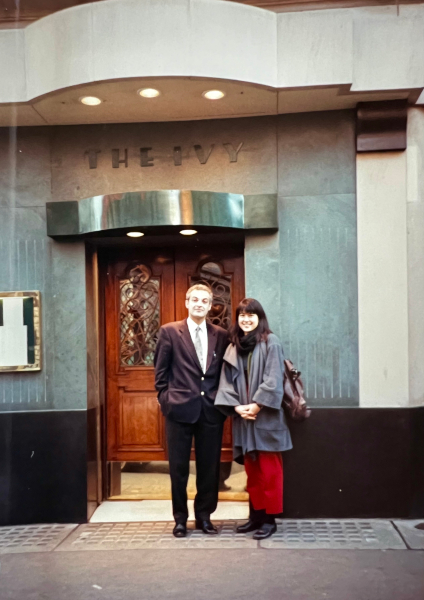
This was how I supported myself while living in London, trying to make my first film. Having recently graduated from Oberlin College in a study-abroad program in London with a Cultural Studies and Women’s Studies major in hand, it wasn’t easy for me to reconcile this menial position with my aspirations to make strong identity-based, feminist work. I had come to London in part inspired by the radical filmmaking of Black British collectives like Sankofa and had worked for a short period with trailblazing South Asian filmmakers Pratibha Parmar and Gurinder Chadha. After graduating, I decided to stay longer in London, stimulated by the cosmopolitan city and its thriving international arts scene. I was soaking up the arts, visiting repertory cinemas like the Scala, where I discovered Beat Takeshi, and the ICA, watching retrospectives of Iranian director Abbas Kiarostami.
Here I was, an American scrappily living independently in London, paying 15 quid a week to flat-sit for my former employer in a cold, damp basement with a drip of a shower. It seemed that deprivation was part of my initiation into filmmaking. I vowed not to be seduced by the superficial allure of commercial filmmaking. I needed to prove to myself that I was willing to sacrifice to make independent films, and not depend on external affirmation or the prestige or connections of institutions. I needed to find my own way with filmmaking.
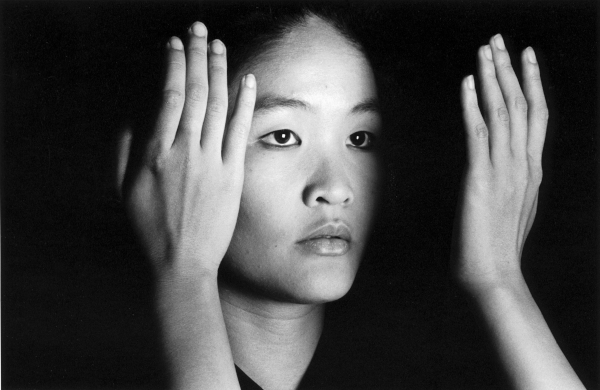
To forge my own artistic path in London and avoid debt, I enrolled in free adult-education courses in video at Tower Hamlets College. I put my heart and soul into my first experimental narrative film, Bound. Using the metaphor of “wrapping,” the film explores a Chinese British woman’s search for self-discovery – how does an identity and “binding” defined around categories of race and gender offer definition and constriction simultaneously? Being young and energetic, I schlepped heavy equipment on the tube. I created sets out of newspaper and Jackson Pollock-inspired freestyle paintings. In the end, I was exhausted and drained. I felt trapped both in the confines of the cloakroom and within the tunnel vision of my project.
I needed to regain a sense of perspective on myself and the world around me. I decided to travel and so with my savings, I set out on a three-month trip to Asia – alone. My plan was to start in Vietnam and go through Thailand and then Malaysia. I had no agenda but brought a Hi8 camera with me. I flew into Hanoi with a big backpack filled with a Lonely Planet Guide, mosquito net, old-fashioned traveler’s checks and an emergency kit filled with Band-Aids and extra syringes. Somehow, I thought syringes might be helpful, in case I needed a blood transfusion! This was before cell phones and email addresses. I was traveling alone, with no contacts and no itinerary. Looking back, I can’t believe how naïve and bold I was.
One serendipity led to the next. Tourism had just accelerated in Vietnam and instead of hanging out with other backpackers, I made friends with Vietnamese people working at the guest houses and in the tourist industry. I ended up in Halong Bay and fell for the Vietnamese captain of one of the tourist boats. We started a wild romance and traveled through the northern part of the country together, dodging local authorities in his hometown who warned him not to associate with foreigners.
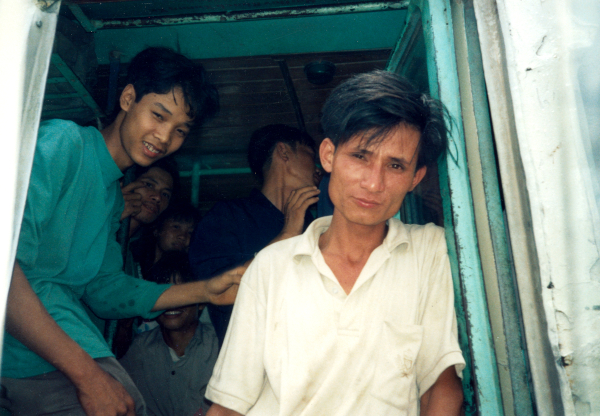
I was living in the moment and responsive to what unfolded around me. I finally regained my ability to see and feel alive. Wandering with my camera through the mountains of Sapa, I’d film small spontaneous encounters with locals, usually filled with intense exchanges of curious looking. I couldn’t speak Vietnamese and was fascinated by the nuances of non-verbal communication: gestures, body language, and the sustained gaze. As I traveled through the country, I filmed the poetry and beauty of everyday life: Hmong girls watching TV of skimpily clad dancing women, two little boys discovering the mechanics of my tripod, a teenager daydreaming while her mother butchered fish. I captured looking and being looked back at, the interplay and shifting power dynamics between the observer and observed. This exploration became Heaven’s Crossroad, a film that premiered at the 2002 Slamdance Film Festival and won the Spirit of Slamdance Award.
It was an important transitional moment for me as a filmmaker, an act of independence establishing that I could be self-reliant and make something impactful with minimal means. This is what documentary filmmaking can be at its best: an opportunity to have rich life experiences, to wander and reflect, to visit new places, to embrace spontaneous encounters. For me, the pleasure of documentary filmmaking is that it is unscripted and exploratory. Once I impose expectations and agenda onto the process, it loses something essential.
Twenty-one years later, I am back at Slamdance with the world premiere of my most recent film, Onlookers, which taps into the same impulse and spirit of independence. Onlookers and Heaven’s Crossroad are part of a larger body of work that I’ve been developing that explores the possibilities and limitations of cross-cultural encounters. Other films include Where Are You Taking Me? (2010), shot in Uganda, and Looking for Adventure (2013), filmed in Peru. Led by curiosity, these films are all visually driven, intimate, and hand-made, whereby I work alone, shooting and recording sound. Without a set plan, I wander and find overlooked, everyday moments rich in meaning: funny, poetic, upsetting, moving. However, in making these films, I am also keenly aware of my position of privilege as a traveler and the colonial legacy that defines the classic travelogue. Critical self-examination is a key component of the work and my process; these films implicate me as the visitor/filmmaker, as well as the audience, and raise fundamental questions around the complex politics and ethics of cross-cultural representations.
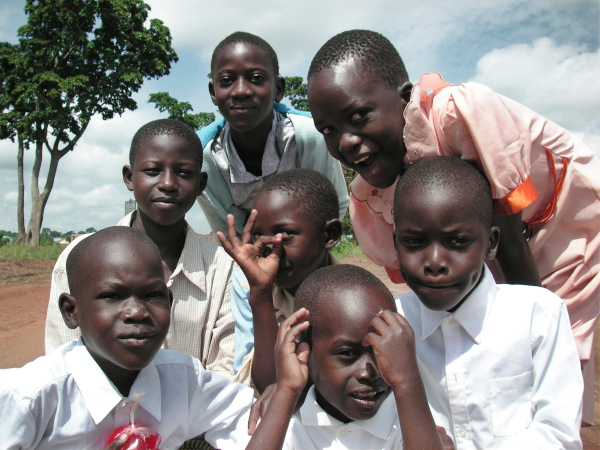
Onlookers is a visual and immersive meditation on travel and tourism in Laos and how we all exist as observers. The film critiques the disruptive nature of tourism in Laos and delves into the existential questions of why people travel. What do those who have the privilege to travel seek when they so often replicate and impose what is familiar? Why do people fly thousands of miles from home to lounge in a Laotian guest house and watch reruns of Friends? Why do we climb to the top of a colossal mountain just to snap selfies, rather than enjoy the extraordinary view? We are present, but absent. Looking, but not seeing.
I had always wanted to travel to Laos because I had heard about the welcoming people and the slow, tranquil pace of life. When I first arrived in the country, it felt instantly familiar to me. I grew up in Hawai’i and felt at home in a laid-back environment with palm trees and a tropical climate. Being from a popular tourist destination, I was accustomed to watching sunburnt tourists awkwardly traipsing along the beaches, often disrespectful of island culture and etiquette. Now the tables were turned, and I was the awkward backpacker on a standard itinerary, needing to consider my impact on the people and places visited. Onlookers tracks the intricate choreography of travel, and the power imbalances at play as tourists and locals intermingle, vie for space and move on parallel tracks without contact, often oblivious of one another.
Closely observing the world and trying to understand my place within it have always been integral to my experience as a biracial person. My father is Japanese American and my mother Caucasian. After they divorced, I shuttled between – and tried my best to navigate – two radically different cultural zones: Hawai’i and Massachusetts. Occupying a space on the fringes as an observer, I never quite fit in and developed a chameleon-like ability to blend into situations. I exist as an outsider and insider, simultaneously. This pulsation between voyeurism and intimacy is a distinctive part of my perspective as a filmmaker.
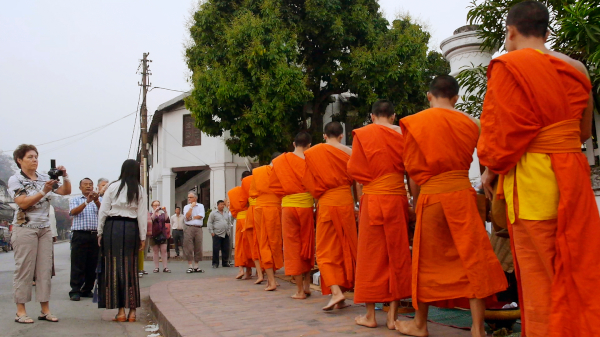
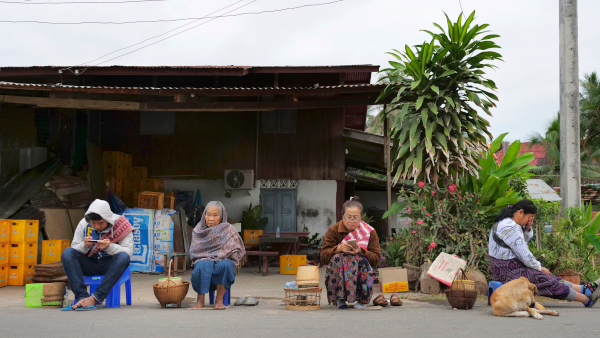
Onlookers celebrates the nuances of “looking” within a cross-cultural context. Interesting chains of seeing occur as I, the filmmaker, look at other people looking and photographing. This process of deep observation becomes an act of meditation. So often, I am swirling in thoughts – regretting my past and worrying about the future. I find it almost impossible to be present. In a world of constant distraction, Onlookers embraces the act of attention. What might be gained if we look and listen deeply?
This is a film that invites the audience to slow down and watch moments unfold – in their complexity, precision, and beauty – on a journey through Laos. I’m interested in capturing the interplay between naturalism and stylization in filmic images. How can the spontaneity of life play out within a fixed, formal frame? This thrilling form of filmmaking requires patience; I discover moments when all the elements cohere: color, light, movement, meaning. Henri Cartier-Bresson talked about the decisive moment captured in his photographs – these are extended decisive moments that move in time. In a sense, each shot is a mini film that allows the viewer time to fully engage with the image.
Within my filmmaking, I want to create time and space for contemplation for the viewer. I am drawn to travel within my practice because it inspires self-reflection and challenges me, both artistically and personally. Filming alone also demands that I manage fear. As I get older, I am more apprehensive and aware of all the things that can go wrong. I have to push myself to continue to take risks, physically and artistically. It is daunting to rely on oneself. I still remember moving by bus from Luang Prabang to Nong Khiaw and then south to Vang Vieng, Pakse and the 4,000 Islands – cradling in my lap my bag, which held essential drives, camera, and computer, while my backpack was precariously tied on the roof of a minivan. I filmed alone, heaving equipment on my back, squatting as inconspicuously as possible on dusty roads, and always sweating profusely. The act of solo travel and filming can be incredibly difficult, but also exhilarating and empowering.
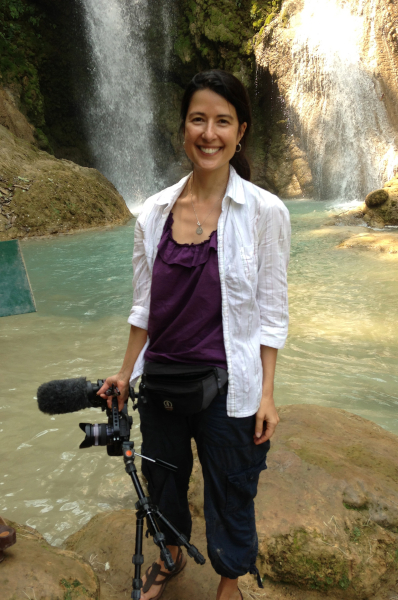
As artists, our job is to identify and utilize our specific strengths. In the film world, we are often conditioned to believe that “more” is better, but that is not always the case. Bigger cameras and larger crews can also be intrusive. I’ve come to appreciate that different opportunities and possibilities arise for me as a single woman shooting alone. In certain situations, being a less intimidating presence can be my greatest asset and lead to unexpected, playful encounters.
Ultimately, the pleasure of documentary filmmaking for me is in connecting with new people and places in surprising ways that broaden my worldview. As I make intimate, observational films, I regain a sense of vision and a grounding connection to myself as a person and artist. Onlookers challenged me to be present in the moment and to see with greater clarity the beauty, humor and complexity arising in everyday moments as tourists, like me, and locals in Laos intermingled and coexisted. My hope is that the viewer can share this expansive, eye-opening journey with me.
Featured image shows Kimi Takesue on top of a mountain in Laos, during the making of Onlookers. All images courtesy Kimi Takesue.


